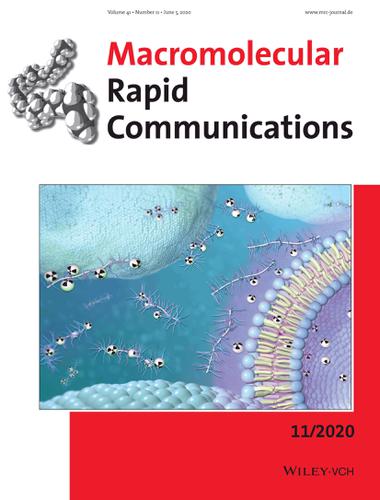当前位置:
X-MOL 学术
›
Macromol. Rapid Commun.
›
论文详情
Our official English website, www.x-mol.net, welcomes your
feedback! (Note: you will need to create a separate account there.)
pH‐Responsive Polymers for Improving the Signal‐to‐Noise Ratio of Hypoxia PET Imaging with [18F]Fluoromisonidazole
Macromolecular Rapid Communications ( IF 4.2 ) Pub Date : 2020-06-08 , DOI: 10.1002/marc.202070025 Jeroen A. C. M. Goos , Maria Davydova , Nigel Lengkeek , Ivan Greguric , Michael R. Whittaker , John F. Quinn , Jonathan B. Baell , Jason S. Lewis , Thomas P. Davis
Macromolecular Rapid Communications ( IF 4.2 ) Pub Date : 2020-06-08 , DOI: 10.1002/marc.202070025 Jeroen A. C. M. Goos , Maria Davydova , Nigel Lengkeek , Ivan Greguric , Michael R. Whittaker , John F. Quinn , Jonathan B. Baell , Jason S. Lewis , Thomas P. Davis

|
Front Cover : Positron emission tomography (PET) imaging of hypoxia using the radiotracer [18F]FMISO suffers from a poor signal‐to‐noise ratio due to the unwanted uptake and slow clearance of the radiotracer in surrounding non‐hypoxic cells. In article 2000061, Jason S. Lewis, Thomas P. Davis, and co‐workers decrease the uptake in non‐hypoxic cells by delivering the radiotracer using pH‐responsive polymers, which only release the radiotracer in the acidic microenvironment of hypoxic cells. Cover design credit: Memorial Sloan Kettering Cancer Center.

中文翻译:

pH响应型聚合物,可通过[18F]氟代嘧啶提高缺氧PET成像的信噪比
前盖:使用放射性示踪剂[ 18 F] FMISO对低氧进行正电子发射断层扫描(PET)成像,因为放射性示踪剂在周围的非低氧细胞中会被有害的吸收和清除缓慢,因此信噪比很差。在文章2000061中,Jason S. Lewis,Thomas P. Davis和他的同事通过使用pH响应聚合物递送放射性示踪剂来减少非缺氧细胞的摄取,而该放射性示踪剂仅在低氧细胞的酸性微环境中释放放射性示踪剂。封面设计来源:纪念斯隆·凯特琳癌症中心。

更新日期:2020-06-08

中文翻译:

pH响应型聚合物,可通过[18F]氟代嘧啶提高缺氧PET成像的信噪比
前盖:使用放射性示踪剂[ 18 F] FMISO对低氧进行正电子发射断层扫描(PET)成像,因为放射性示踪剂在周围的非低氧细胞中会被有害的吸收和清除缓慢,因此信噪比很差。在文章2000061中,Jason S. Lewis,Thomas P. Davis和他的同事通过使用pH响应聚合物递送放射性示踪剂来减少非缺氧细胞的摄取,而该放射性示踪剂仅在低氧细胞的酸性微环境中释放放射性示踪剂。封面设计来源:纪念斯隆·凯特琳癌症中心。










































 京公网安备 11010802027423号
京公网安备 11010802027423号